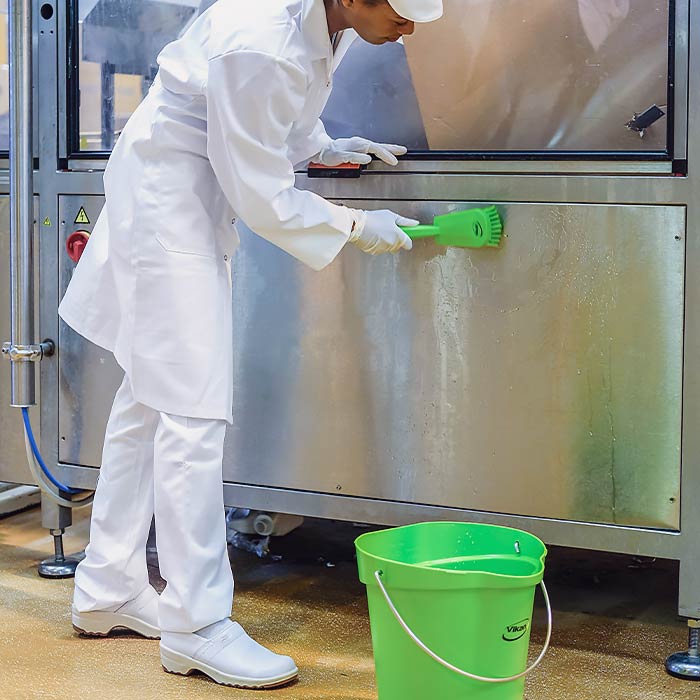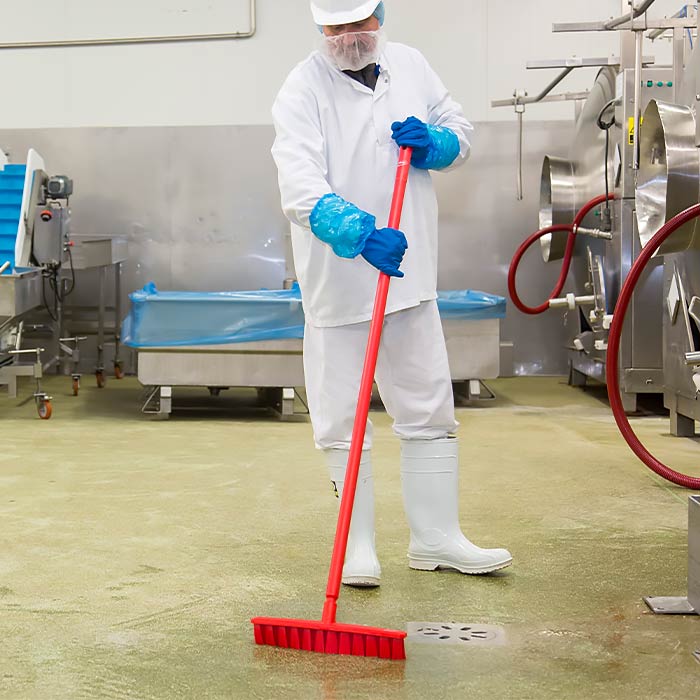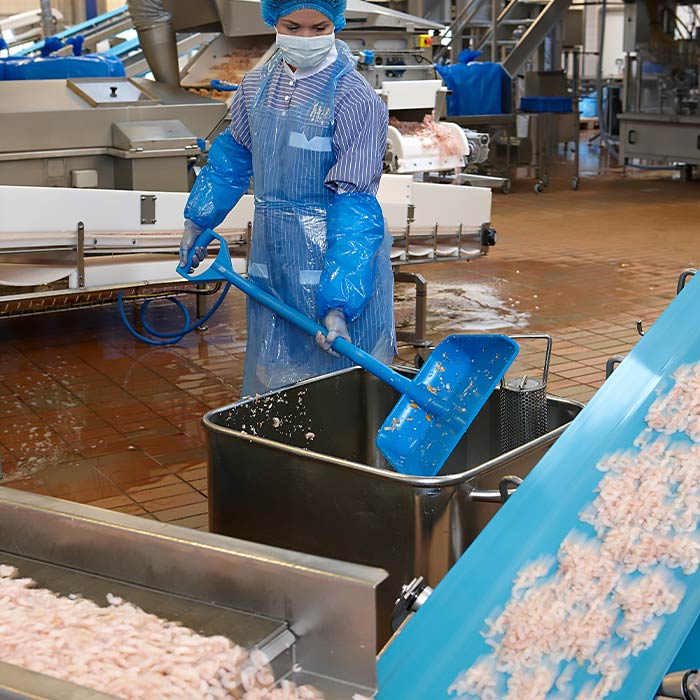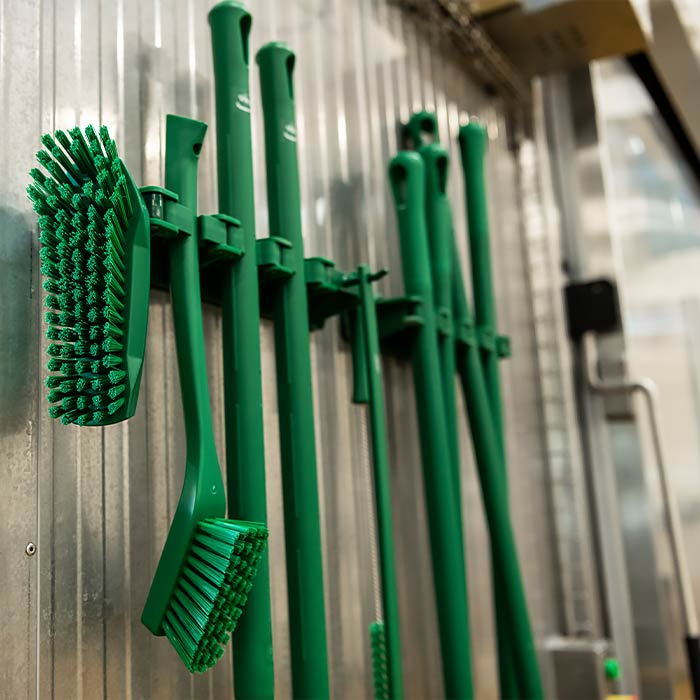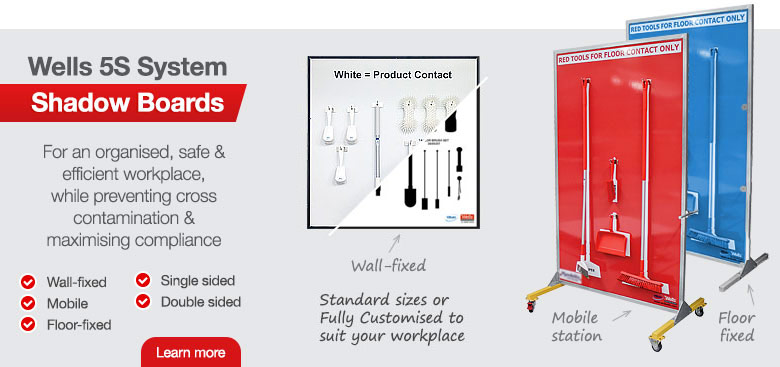11 useful tips for colour-coding in your facility
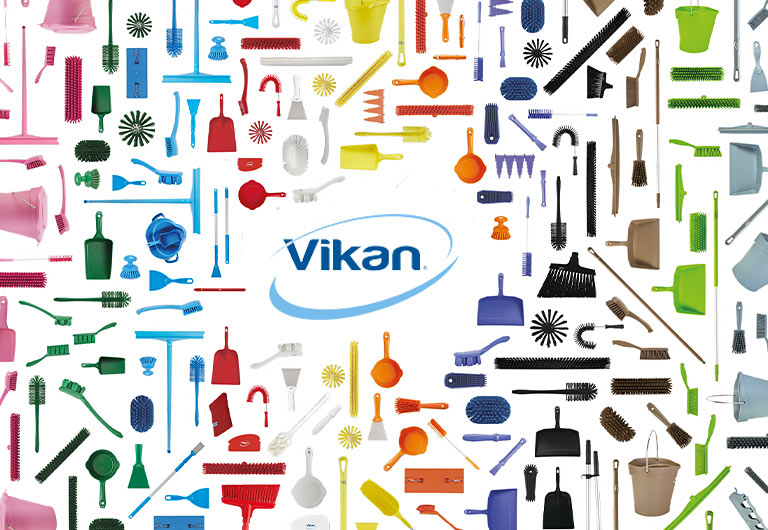
Getting the full benefits of colour coding your cleaning tools and equipment normally rests on being:
- Systematic
- Consistent
And:
- Keeping it simple – complicated systems always go wrong in some way or another!
- Thinking about what it’ll be like for the users
Here are some of the key things to be aware of when you’re planning to colour code:
1. Use contrasting colours
Colour contrast enables you and your employees to easily spot plastic fragments or stray bristles from equipment in the food. You should, of course, always inspect and replace cleaning equipment and food handling tools as soon as they begin to show any signs of wear.
2. Avoid complicated colour combinations
We advise against combining colours on individual tools or tool groups. Instead we recommend using the same colour for handles as well as eg. broom or squeegee heads.

3. Keep it simple
Limit the number of colours as much as possible. Don’t try to assign different colours to each and every step of a complicated process. If the colour-coding system is too complicated, your staff will not understand it or use it.
4. Make sure the colours make sense
The colours you select should make clear, obvious sense to your employees. If possible, you should select colours with a natural, obvious association with a specific zone or food product.
5. Use signs to make it clear
Support your colour coding system with good signage (using images or multilingual text where necessary) to help make sure your employees use it correctly.
6. Use colour-blind friendly combinations
One in 12 men and one in 200 women are colour-blind. Use different shades and contrasts to make it easier for colour-blind staff to differentiate colours.
If in doubt, take a photo of the colours and convert the photo into black and white. If you can tell the difference, the shade differentiation is strong enough to work for your colour-blind employees.
7. Carry out the colour coding programme in full
Implement your colour-coding system within all the zones affected at the same time. For greater clarity, have a definite date for phasing out your old system, and a clear start date for your new colour-coded system.
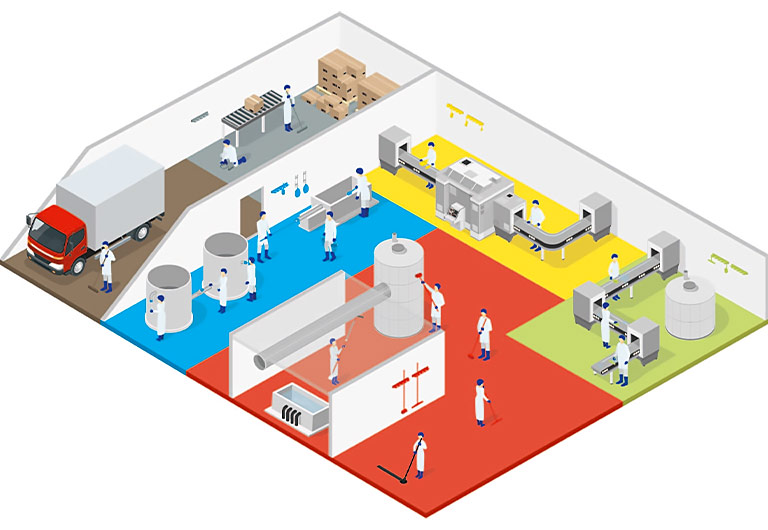
8. Communicate your plan clearly throughout the facility
Meet with each of your shift managers first to ensure they understand the system, then roll out the programme to other employees.
9. Colour match your tools and storage areas
Make sure the tools are stored in the area where they are actually used, and use colour-coded storage, such as shadow boards and wall brackets
10. Follow through
Make sure your purchasing department, quality manager and employees all use the same documentation, so everyone is part of the same system.
11. Set up a colour-coding maintenance plan
Regularly monitor and review your colour-coding plan and check and maintain your equipment to give you the best possible control of cross-contamination risks.
There are many down-to-earth examples of how you can implement good colour-coding practices. A Vikan representative can share these with you.
We are happy to visit your facility and carry out a Site Survey. We will develop a custom-designed colour-coding plan to make your operation as efficient, safe and hygienic as possible.


